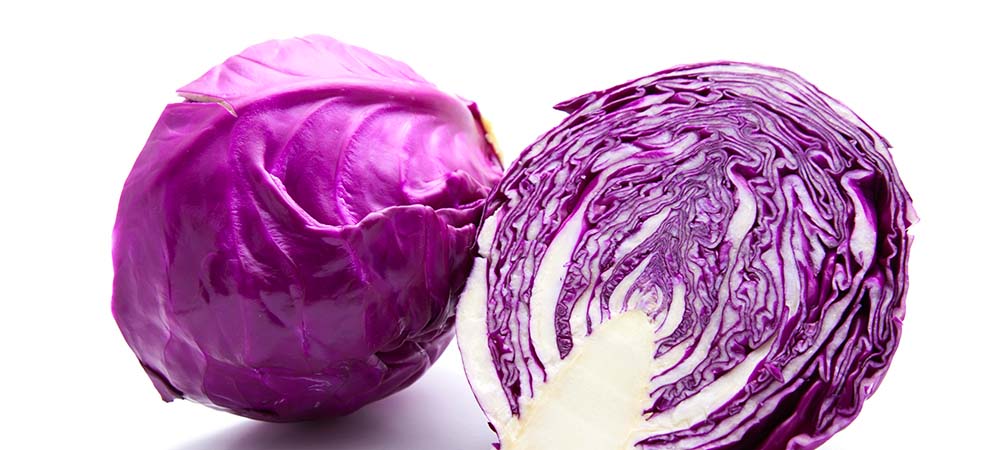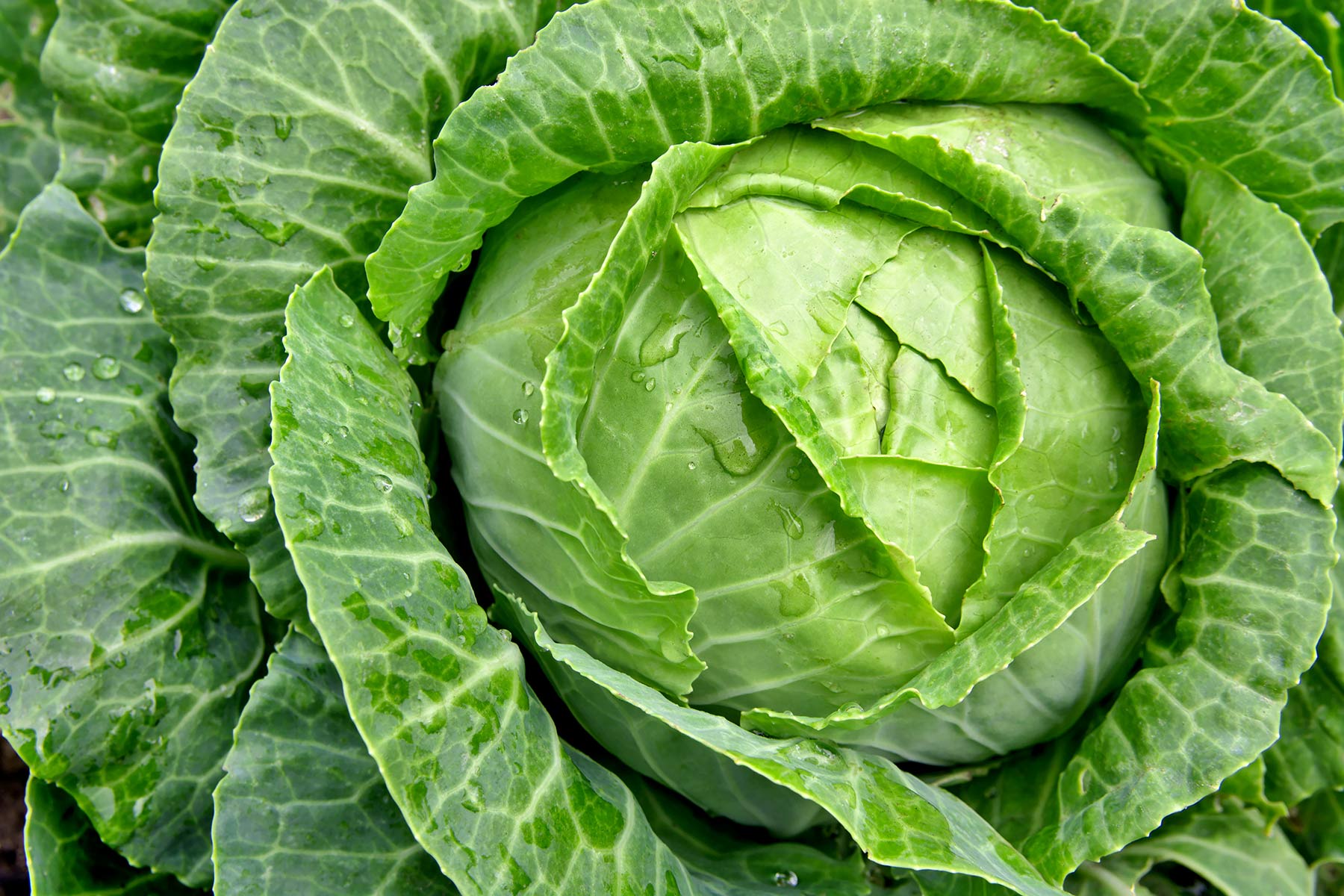Cabbage (Brassica oleracea) is a leafy green, red, or white biennial vegetable that is grown annually, is one of the widely cultivated crops around the world. It belongs to the Brassica family and is round or oval in shape. It consists of soft, light green or whitish inner leaves covered with harder and dark green outer leaves. It is widely used throughout the world. They can be steamed, stewed, fermented, pickled, sautéed and even eaten raw too! Cabbage is closely related to Broccoli, Cauliflower, and Brussels sprouts.
It is usually fried with chicken and eaten with rice, added to various foods e.g fried rice, chow Mein, and also used in salads here in Guyana.
Where Did Cabbage Come From?
Cabbage is native to Southern and Western Europe. Cabbage was cultivated for more than 4,000 years and domesticated for over 2,500 years. Though cabbage is connected to the Irish, Cabbage was brought from Asia by the Celts around 600 B.C. to Europe. In the middle ages, Cabbage had become the part of European cuisine and is also used throughout the world today.
Description Of Cabbage
Cabbages are biennial, herbaceous and dicotyledonous plant that reaches about 40–60 cm (16–24 inch) tall and bear alternately arranged ovate shaped leaves. The leaves are thick, smooth or crinkled. The leaves have the color of light yellowish green – dark green and dark red. The plants produce yellow flowers and bear small round seeds in brown or black. The Cabbage head is oval or conical; green, purple, white and has the size of 25-100 mm which is formed on a short thick stem. The stems are glabrous and erect. The plant has got fibrous and shallow root system. It is in flower from spring, late spring to early summer.

Purple Cabbage | https://naturalfactors.com
Cabbage Comes In Varieties:
- Purple cabbage
- Choy sum
- Bok choy
- Savoy cabbage
- Napa cabbage
- Cannonball cabbage
- January king cabbage
Its Packed With Nutrients!
Cabbage is rich in Vitamin C, beta-carotene and fiber. It is also loaded with good amount of calcium, magnesium and potassium. Furthermore, it contains folate, fiber, zinc, sodium, copper and omega-3 fatty acids. The Cabbage of 75 gm provides 28.1 mg Vitamin C, 22 µg Vitamin B9, 36 mg Calcium and 147 mg Potassium. The same amount provides 17 calories.
10 Health Benefits Of Cabbage
- Prevents cancer – Cabbage possess huge amount of antioxidants which helps to eliminate the free radicals from the body and reduce the chances of heart disease and cancer. It is also rich in anti-cancer compounds such as sinigrin, lupeol and sulforaphane that enhances the enzyme activity and forbid the tumor growth that lead to cancer. The study shows that the regular intake of cabbage reduces the breast cancer in women.
- Anti-inflammatory agent – Cabbage possesses glutamine which is known to be an anti-inflammatory agent. The regular intake of Cabbage helps to lower the inflammation, joint pain, irritation, fever, allergies and skin disorders.
- Vision health – Cabbage possess high amount of beta-carotene which helps to prevent the chances of macular degeneration by enhancing eye health and delay the formation of cataracts. Beta-carotene is related to reduce chances of prostate cancer.
- Helps to lose weight – Cabbage is loaded with various minerals, vitamins and nutrients. It possess huge amount of fiber that adds bulk to the bowels. Cabbage is also low in calories. It makes the people feel full for long time.
- Enhance brain – Cabbage possesses anthocyanins and Vitamin K which promote the concentration and mental function. Vitamin K is required for the production of myelin sheath and sphingo lipids around nerves. It prevents the nerve damage and decay. The consumption of Vitamin K enhances the defense against Alzheimer’s disease, neural degeneration and dementia. The antioxidants found in Cabbage reduce the chances of cancer, counteracts diseases, enhance the brain function as well as nervous system.
- Protect bones – Cabbage is good source of minerals such as magnesium, calcium and potassium which are essential to protect bones from the degradation and the health conditions such as general bone weakening and osteoporosis.
- Maintain blood pressure – Cabbage contains potassium which helps to maintain the blood pressure and reduce the chances of stroke as well as heart attack. Potassium assists to open the blood vessels and ease the blood flow by preventing the stress induced flow of blood through constricted veins and arteries.
- Skin health – Cabbage is rich in antioxidant sources such as Sulphur, vitamin C and anthocyanins. Antioxidant plays a vital role in the skin health. It eliminates the free radicals which are the cause of skin discoloration, wrinkles, spots and others. The consumption of cabbage provides the young and healthy skin.
- Relieves muscle pain – Lactic acid is released during the cooking of sauerkraut which helps to lower the muscle ache and soreness. This compound is not found in other diets. It relieves the general pain and muscle soreness.
- Detoxify body – Cabbage eliminates toxins, free radicals, uric acid and also purifies the blood which is the cause for gout, rheumatism, arthritis, skin diseases, renal calculi and eczema. The high presence of Vitamin C and Sulphur in the Cabbage provides this detoxifying effect.
Culinary Uses Of Cabbage
- It could be consumed raw or pickled.
- It is also fermented for dishes such as steamed, sauerkraut, stewed, braised and sautéed.
- It could be added to salads.
- They are boiled, steamed and stir-fried.
- The leaves are used to wrap the foods before baking or braising.
Traditional Uses Of Cabbage
- The juice which is extracted from red cabbage is useful for bronchitis, chronic coughs and asthma.
- The juice of white cabbage is used to cure warts.
- The bruised leaves of white cabbage are used to treat blisters.
- The juice of the cabbage helps to heal the gastric ulcer.
- Cabbage is used in folk medicine of European to treat acute inflammation.
- The paste made from the raw cabbage, if wrapped around the affected area by placing it in a leaf of cabbage helps to eliminate discomfort. It provides relief from painful engorged breasts in the breastfeeding women.
Did You KNOW that Cabbage Has Side Effects?
- Bloating
- Food-borne illness
- Goiter
- Iodine intake
- Flatulence
- Diarrhea
- Drop in blood sugar levels
- Colic
Fried cabbage with chicken (Guyanese Style Recipe)
Ingredients:
- small or 1/2 large cabbage
- meat from 4 chicken drumsticks or your choice
- 7 cloves garlic
- 1/2 onion
- 3 stems scallion
- 1 tomato
- pepper to taste
- salt to taste
- black pepper to taste
Method:
- Wash and chop cabbage and chicken and prepare seasonings.
- Blend or mince garlic and pepper.
- Heat some oil , keep stove at medium heat.
- Now add chicken, add a bit salt and black pepper, fry for about 2 mins.
- It is time now for the scallions, onion, garlic and pepper, fry for 1 min.
- Lastly add tomatoes and cabbage, add salt to taste.
- Give a good mix , cover and let cook.
- Add some water, just a little to help boil the cabbage, stir, cover.
- Cook until it evaporates to your liking.
Watch This
Cabbage
Cabbage is an exceptionally healthy food. Eating cabbage may even help lower the risk of certain diseases, improve digestion and combat inflammation. Plus, cabbage makes a tasty and inexpensive addition to a number of recipes. It is no wonder its enjoyed by many worldwide!
Article References:
- https://en.wikipedia.org/wiki/Cabbage
- https://www.organicfacts.net/health-benefits/vegetable/health-benefits-of-cabbage.html
- https://www.nutrition-and-you.com/cabbage.html
- https://www.healthline.com/nutrition/benefits-of-cabbage
- https://www.healthbenefitstimes.com/cabbage/
- https://www.realniceguyana.com/recipes/fried-cabbage-with-chicken/
- https://www.avogel.co.uk/food/ingredients/cabbage/







